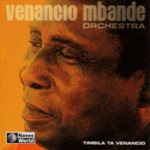
Timbila Ta Venancio
 $25.00
Out of Stock
$25.00
Out of Stock2-4 weeks add to cart more by this artist
Venancio Mbande
Timbila Ta Venancio
[ Naxos World / CD ]
Release Date: Monday 3 September 2001
This item is currently out of stock. We expect to be able to supply it to you within 2 - 4 weeks from when you place your order.
Timbila is a xylophone-like instrument and the name of the rhythmic music that comes from the Chopi people of rural Mozambique. One of the last living masters of the timbila drum orchestra is Venancio Mbande. He is 70 years old, lives in a small village without electricity or modern amenities, but his skills as an ensemble leader, musician and master of the timbila tradition are undeniable.
In the fall of 2000, Finnish musician Eero Koivistoinen, with two engineers and a small digital recording van rented from South Africa, traveled to the town of Quissico in the Zavala district some 300 km north of Maputo, the capital of Mozambique. This is where Mbande lives and his 28-piece band is based. There, they set up equipment, made arrangements with the band about how they would record and gave a live pig to the group as part of the recording agreement. The pig became the catering during the live field recording and the resulting session heard on Timbila Ta Venancio is an intoxicating cacophony of timbila sounds and rhythm. And it is all captured live under the Mozambique sun and stars over two days during an evening session and the following morning.
Making a powerful and sublime impression with their precision and skill, Venancio Mbande's timbila orchestra is peerless. The maestro was born in 1930 and despite living in a remote Mozambique village, Mbande speaks fluent English, which he learnt working in South Africa. Under the guidance of his uncle and other relatives, he learned to play the timbila at age six (the family tradition is still going strong: several of his 14 children are in Mbande's orchestra). At 18, Mbande started to work in the gold mines of South Africa. He gathered his first timbila orchestra in 1956 and also started to compose. This is how his work as a successor of the musical tradition of the Chopi tribe began. His various bands have given education to hundreds of musicians and dancers.